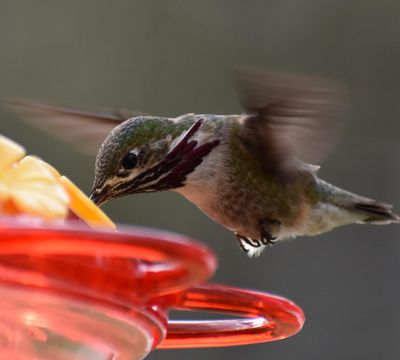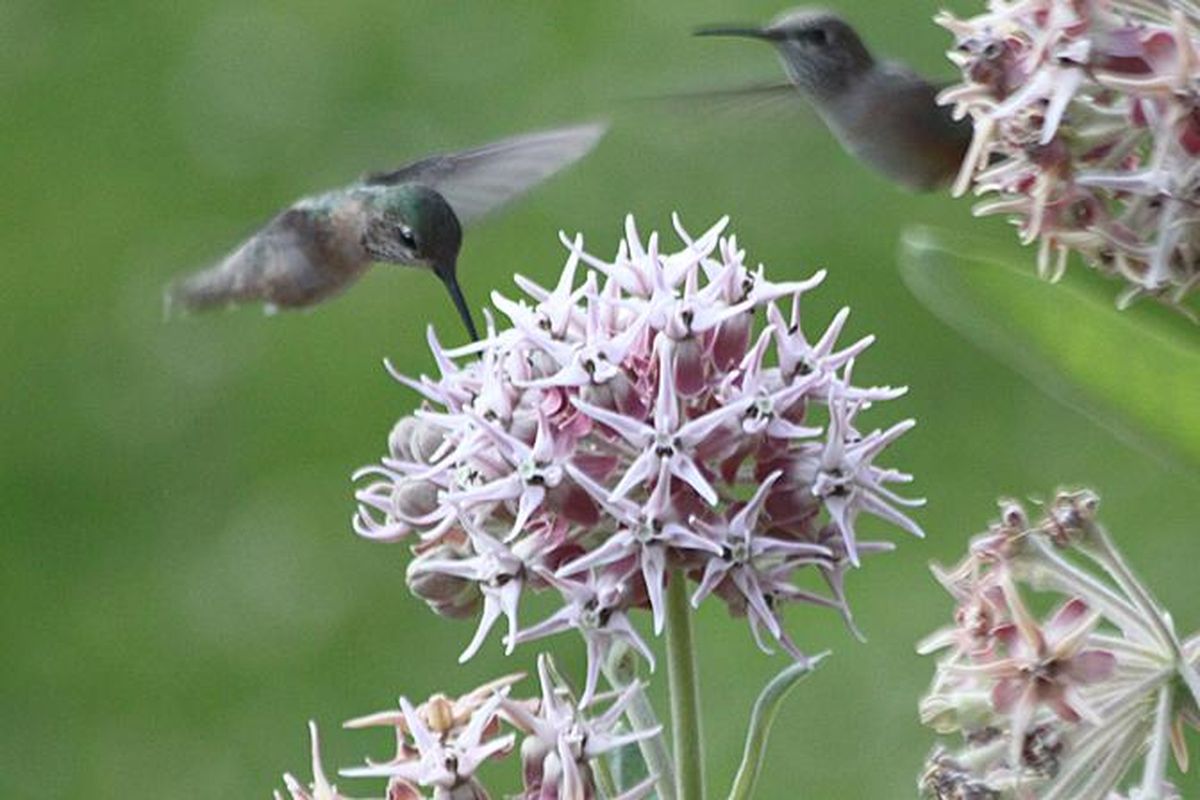Stuck at home? Backyard birding is the perfect quarantine activity

It has all the drama and intrigue of your favorite Netflix show. It’s an activity that can be done from home and doesn’t involve watching TV, drinking or cleaning.
In short, backyard birding is the perfect quarantine activity.
“It’s like having a whole cast of characters outside your window,” Angela Roth said. “The hummingbirds, they’re kind of like divas and they are known to be backyard bullies. I’ve been watching the swallows try and take over the bluebird nesting boxes, so you’ve got your villains.”
From her home near Nine Mile Falls, Roth said backyard bird watching is “sheer entertainment.”
Although stay-home orders have loosened a little and state parks have reopened, public health officials are still urging us to stay home as much as possible to slow the spread of the coronavirus.
With the weather getting nicer by the day, that’s becoming harder to do.
Luckily, now is a prime time to take up backyard birding.
In the spring, birds are starting their northerly migration, which means backyard watering holes and feeders are hotspots of activity, avid birder (and Fish and Wildlife commissioner) Kim Thorburn said.
“The birds are arriving,” she said. “We’re kind of the nursery of songbirds in the Pacific Northwest.”

In particular, Thorburn loves watching hummingbirds. The three species that can be regularly found in this area – calliope, black-chinned and rufous – all leave the area in the winter.
“It’s very fascinating,” she said. “To think of these little creatures that go these huge distances and how they do it.”
Thorburn said she’s seen a lot of calliope hummingbirds this year. Now is also a good time to spot songbirds like the American goldfinch.
If you live in the city, birding is still a great option.
“You can get both our local species of chickadees,” she said. “You’ll get all the nuthatches and the finches.”
Backyard birding will remain good through June, Thorburn said.
Madonna Luers, a spokeswoman for the Spokane Audubon Society, said the COVID-19 quarantine is the perfect time to start birding. The other day her husband was on the porch talking on the phone when he spotted a bird they hadn’t seen in years: a lazuli bunting.
“You never know what you’re going to see,” she said. “It’s a cool time to be paying attention to what’s right in your own backyard.”
Below are some tips, tricks and advice for the novice backyard birder.
Listen carefully
A common beginner mistake is to focus too much on the seeing and not enough on the listening, Thorburn said.
“People think of it as bird watching,” she said. “But the reason we call it birding is because people who do it a lot are both listening and looking for the birds.”
Learning the different songs and calls of birds will help you find the birds in your backyard and identify them. The Audubon Society has recordings of bird songs and calls online that you can listen to anytime.
“Use the sound to direct you to the bird and what the bird is doing,” Thorburn said.
That also means that binoculars aren’t vital, at least at first. Especially when watching from the comfort of your backyard.
Instead, Thorburn recommends trying out several pairs of binoculars, either borrowing from friends or going to the store, before purchasing one. Don’t get too caught up in having the best pair possible.
To feed or not to feed
In the spring, it’s not necessary to put feed out for songbirds, Luers said. Having a water source is more important for attracting songbirds. Certain native plants will also attract birds to your backyard.
“Think about the things you’re growing in your garden,” Thorburn said. “Service berries, that is a bird smorgasbord. That’s a great native to have.”
If you do put out bird food, it’s important to keep the food fresh and the feeder clean. The chances of disease breaking out increase in any spot where wildlife congregates.
Angela Roth recommends putting out blocks of suet (basically a solidified mix of fat; recipes vary). Suet blocks don’t attract other animals as much as loose feed, she said.
There is an exception to this advice. If you’re hoping to catch the hummingbird drama, you will most likely need to put out a hummingbird feeder.
Luckily, these are the easiest feeders to maintain. The simple recipe is one part sugar to four parts water.
It will be well worth the effort.
“It’s such a colorful show,” Luers said.
Bird houses and protection
Although you may not need to put food out, Roth has several bird houses for the nuthatches. She made sure the entry hole is small enough to keep swallows out.
Michael Woodruff points out that bird houses are about $10 at Walmart, or easy to build yourself.
Finally, Roth shares a trick she’s learned to keep neighborhood cats from prowling: Use orange oil. After she sprayed her fence line with the stuff, she had no more problems.